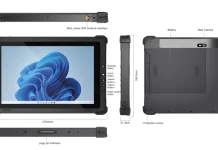Arm discomfort may be severe, affecting people of various ages and activities. Whether it’s a subtle ache, severe shooting pain, or ongoing discomfort, recognising the underlying reasons and effective alleviation measures is critical for treating this illness and increasing overall quality of life. In this detailed guide, we will look at the numerous reasons of arm pain and effective treatment options to help you restore control and relieve suffering.
Prosoma 500mg is mostly formed of the active component carisoprodol. Carisoprodol is a muscle relaxant used to relieve muscular spasms and pain. It works by altering neuronal transmission in the central nervous system, which helps to relieve muscular discomfort and tension.
Common causes of arm pain:
1. Musculoskeletal injuries.
Musculoskeletal injuries, including strains, sprains, and fractures, are among the most common causes of arm discomfort. These injuries are often the consequence of unexpected hits, overuse, or poor lifting skills. Tennis elbow, rotator cuff injuries, and carpal tunnel syndrome are some common instances. Identifying the precise damage and receiving proper medical care is critical for successful treatment and recovery.
2) Nerve Compression
Nerve compression, sometimes called nerve entrapment, happens when a nerve is crushed or pinched, causing pain, numbness, and tingling in the afflicted arm. Cervical radiculopathy, ulnar nerve compression, and thoracic outlet syndrome are all potential causes of arm discomfort. Addressing the underlying cause of nerve compression with physical therapy, medication, or surgery may give relief and avoid future issues.
3. Joint Disorders.
Joint problems such as arthritis, bursitis, and tendonitis may cause inflammation and discomfort in the arms. These disorders are often caused by normal wear and tear, autoimmune reactions, or underlying medical diseases. Anti-inflammatory medicines, physical therapy, and joint injections are all alternatives for treating symptoms and improving joint function.
4. Overuse and Repetitive Strain
Overuse and repetitive strain injuries are widespread among those who do repeated actions or occupations that put too much pressure on their arms. Tennis elbow and golfer’s elbow are examples of repetitive strain injuries that may result in discomfort, stiffness, and a restricted range of motion. Ergonomic changes, rest, and strengthening exercises may help relieve symptoms and avoid recurrence.
Prosoma 350mg is generally used as a muscle relaxant. Its primary element is carisoprodol, which acts by inhibiting pain signals between neurons and the brain. It is often recommended for the temporary alleviation of acute musculoskeletal pain or discomfort. Prosoma 350mg should be taken with caution and under the supervision of a healthcare expert, since it has habit-forming properties and may produce drowsiness or dizziness.
Effective relief strategies
1. Rest and immobilisation.
Resting the afflicted arm and avoiding activities that cause discomfort are critical for aiding healing and minimising inflammation. Immobilisation procedures, such as splinting or bracing, may be used to stabilise the arm and avoid additional harm. To achieve the best possible recovery, follow your healthcare provider’s advice for rest and activity moderation.
2. Physical Therapy.
Physical therapy may help manage arm discomfort by increasing strength, flexibility, and range of motion. A trained physical therapist may create a customised workout programme that targets particular muscle groups and addresses underlying biomechanical difficulties. Stretching, strengthening exercises, and manual treatment may all help reduce discomfort and restore function over time.
3. Pain-Management Techniques
Managing pain is an important feature of arm pain therapy, especially for those who have persistent or severe symptoms. Nonsteroidal anti-inflammatory medications (NSAIDs), topical analgesics, and nerve blocks may be used to treat pain and inflammation. Alternative treatments such as acupuncture, massage therapy, and transcutaneous electrical nerve stimulation (TENS) may also give relief for certain people.
4. Surgical intervention
When conservative therapies fail to give sufficient relief, surgical intervention may be required to address underlying structural abnormalities or nerve compression. Based on the precise diagnosis and degree of symptoms, procedures such as arthroscopic surgery, nerve decompression, and joint replacement may be indicated. To make an educated choice, you should consult with your healthcare professional about the possible risks and advantages of surgery.
Conclusion
Arm discomfort may have a substantial effect on daily functioning and quality of life, but with the right knowledge and therapy, relief is attainable. Individuals may overcome arm discomfort and recover control of their life by understanding the root reasons, applying effective treatment measures, and collaborating with healthcare experts.



























![InstaPro APK Download Latest Version 2023 [Anti Ban]](https://olo.my.id/wp-content/uploads/2023/10/instapro-100x70.jpg)